
CERTIFIED SOUL NUTRITION WISHING YOU A HAPPY PESACH! NISSAN 5783 ד”סב ג”פשת ןסינ חספ ןכעליירפ ןוא רשכ א
Dear Reader,
As Pesach approaches we are reminded of our journey from slavery to freedom, and sometimes it feels like a story from long ago that is hard for us to truly imagine.
Even stories about our great-grandparents and their mesiras nefesh for Shabbos, kashrus, and Pesach seem like a thing of the past, from a faraway time. Just when we think those impossible times are forever in the past, some of us are faced with a new reality that somehow seems like we are going backwards in time. I’m referring to the Jewish community in war-torn Ukraine. Despite the incredible hardship, Tiferet Amatzot’s two large, ~ certified bakeries that produce handmade shemurah matzah are still operating in Ukraine under extremely difficult conditions. Ukraine is actually the biggest producer of matzah in the entire world!
One matzah bakery is in the city of Dnieper and the other is in Uman and throughout the duration of the war, these dedicated people have mesiras nefesh to ensure that Jews in Ukraine and across the world have handmade shemurah matzah for Pesach. When the war got too close for comfort, some sent their wives and children to safety, but the bakery staff stayed behind to do whatever it takes to produce this special matzah for Pesach.
When wheat became difficult to source a few years ago due to supply chain issue caused by the pandemic, they managed to acquire fields of their own and planted the wheat that was needed. Now that they have a reliable source of flour, even with a smaller staff working at reduced capacity, they are still baking and distributing matzah throughout wartorn Ukraine and sending truckloads of matzah on a 40-hour drive to Romania to be shipped to the rest of the world.
It is our hope and prayer that the Jews of Ukraine are freed from all the challenges they face, both physical and spiritual, and that all of us, across the world, experience true freedom, and may we merit the coming of Moshiach, speedily in our days.
Wishing you a kosher and freilichen Pesach,
Rabbi Chaim Fogelman


 Editor in Chief, ~ Executive Kashrus Vaad
Editor in Chief, ~ Executive Kashrus Vaad
RABBI
BEREL LEVY OB"M and RABBI DON YOEL LEVY OB"M, who set the standards of kashrus at ~ Kosher Certification and who inspire us daily to perpetuate and uphold their legacy.
is dedicated to
KOSHER SPIRIT Pesach 5783 EDITOR-IN-CHIEF: Rabbi Chaim Fogelman EDITOR:Dina Fraenkel DESIGN: Spotlight Design We welcome your comments, submissions and letters to the editor. Mail: 391 Troy Avenue, Brooklyn, NY 11213 Email: editor@kosherspirit.com © 2023. No portion of this publication may be reprinted without written consent from the publisher. 3 WHAT’S THE BROCHA? COOKED FRUIT By Rabbi Sholom Ber Lepkivker 4 REMEMBERING OUR FOUNDING LEADERS 6 HEALTHY SPIRIT 8 Ways to Get a Healthy Start to Spring 7 THE KOSHER BETTY CROCKER: WHY IS TEVILAS KEILIM NOT REQUIRED By Rabbi Levi Schapiro 10 LET NO MAN THIRST FOR GOOD [KOSHER] BEER by Rabbi Yoni Rappaport 14 KOSHER PETS By Dina Fraenkel 16 A CLOSER LOOK: EGGS by Rabbi Sholom Ber Hendel 18 CREATING A METHOD TO THE MADNESS By Duby Litvin 20 PESACH RECIPE: CHOCOLATE MOUSSE WITH COOKIE CRUMBLE 22 CHASSIDIC INSIGHTS: PESACH A Belted Waist, Shod Feet and Staff in Hand 23 SOUL NUTRITION by Rabbi Chaim Fogelman
photo credit: Marko Dashev
What’s the Brocha?
By Rabbi Sholom Ber Lepkivker ~ Rabbinic Coordinator

pesach is approaching and, for many of us, we rely heavily on fresh produce for the bulk of our diet. Compote (stewed fruit) is a common desert or snack during Pesach and it comes along with the question of what brocha to make before eating.
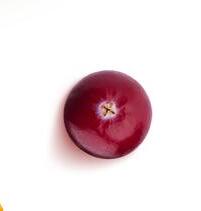
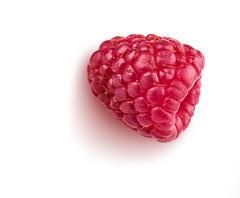
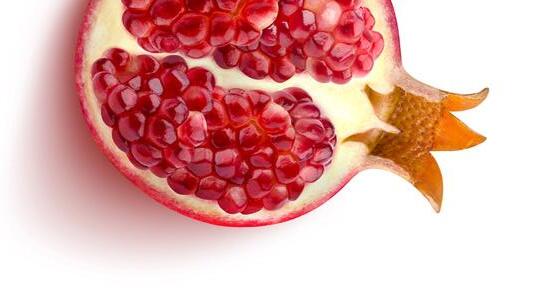
The Shulchan Oruch HaRav says1 that the correct brocha depends on whether most people consume the fruit raw or cooked. If the fruit is consumed both raw and cooked (i.e. apples), the brocha remains ha’eitz as long as the cooking process does not degrade the flavor of the fruit. If cooking the fruit does render it less tasty, the correct brocha is shehakol.
If the fruit is usually cooked before eating (like plantains) and it has a better flavor when cooked, then the brocha over the raw fruit is shehakol and the brocha over the cooked fruit is ha’adamah or ha’eitz, depending on the fruit. If the fruit tastes better raw, even though most people consume it cooked, the brocha remains ha’adamah or ha’eitz, depending on the fruit, even when it is raw.
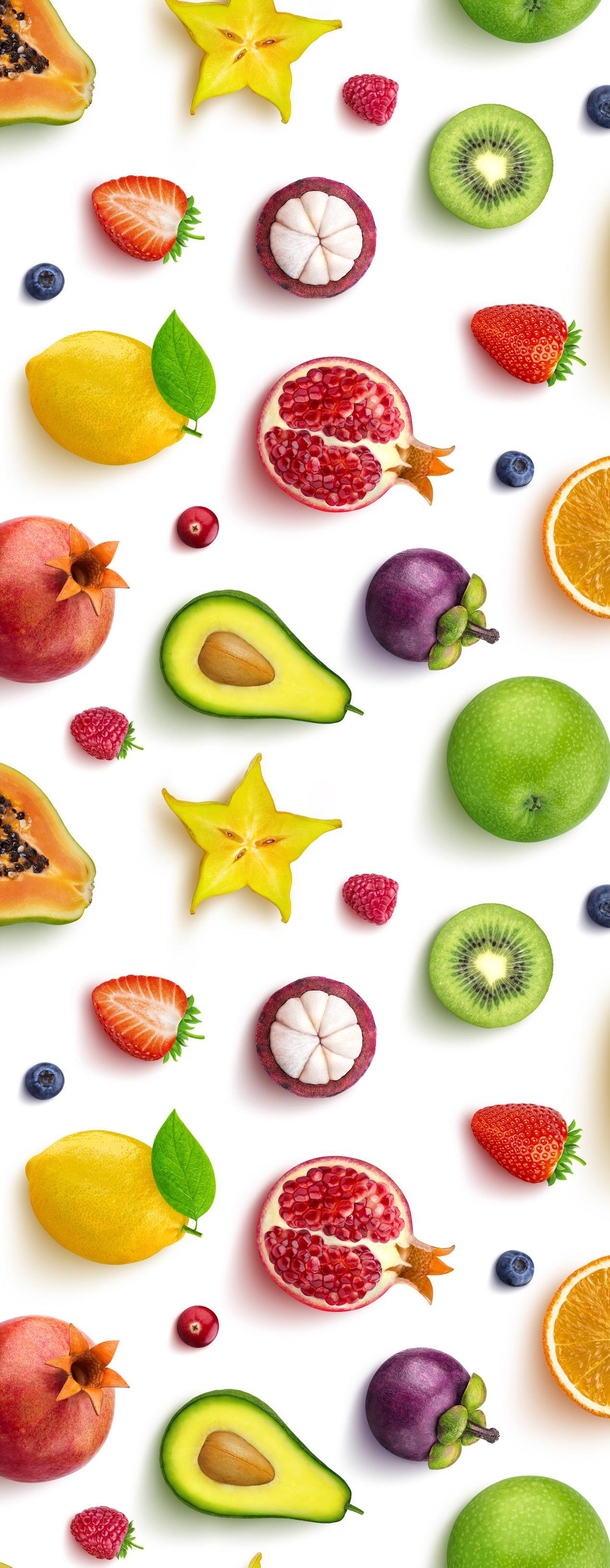
The water, added for the cooking process, is always shehakol, even though the water is saturated with the fruit’s flavor2; however, some rule that the cooking water from a fruit that is usually consumed cooked retains the brocha of the original fruit. In order to satisfy both opinions, one should say shehakol on the water first and then make a brocha on a different fruit.3 If the cooked fruits are one of the Shivas HaMinim, one should not consume the water without also consuming enough fruit and other shehakol items to avoid any doubt regarding the brocha acharonah.
Beer and tea never retain the brocha of the original fruit/grain, because they are intended to be consumed separately from the original fruit/grain, and are always shehakol. ~
www.KosherSpirit.com 3
1 אי-’י ’ס ו’’פ נ”הכרב’. 2 ו’’ט – א’’י ’ס ז’’פ םש 3
It is not clear whether one should make the brocha on the fruit before making shehakol on the cooking water, or vice versa.
36th Yartzeit
REMEMBERING OUR
Rabbi Berel Levy, ob”m, was the Rav HaMachshir of ~ Kosher Certification (then known as Organized Kashrus Laboratories) for over twenty years. He singlehandedly raised the ~ from a small kosher certification agency to a global agency impacting and shaping kashrus worldwide. Rabbi Berel Levy passed away on 5 Nissan, 1987. His son, Rabbi Don Yoel Levy, ob”m, took the helm of the ~ and expanded upon his father’s vision and legacy, bringing the ~ into the 21st century as the leader in kosher supervision and technology. Rabbi Don Yoel Levy passed away on 22 Nissan, 2020.
 By Rabbi Don Yoel Levy OB"M
By Rabbi Don Yoel Levy OB"M
Every year, as my father’s yarzheit approaches, I contemplate how he would act if he were alive today. One character trait that always comes to mind is my father’s firm stand concerning his principles – no matter what challenge he was faced with, my father never compromised on his principles.
In Chassidus, there is a concept called P’sichas HaTzinor, the opening of the pipe. This means that the mitzvos that should be difficult for us to observe are now done with ease due to a person’s pioneering efforts, which have given us the merit and capability to perform those mitzvos.
When I was a young boy, my father certified only a handful of companies. One of his biggest companies was a chocolate company, which was basically the mainstay of the kosher certification at the time. The company used a kosher gelatin, made from kosher slaughtered animals. At some point, the gelatin ran out and was no longer available. The chocolate company came to my father and told him they were going to use a gelatin with dubious certification. My father refused to allow it and the company insisted on using the gelatin, so my father made the decision to drop the certification, even though it meant that the certification agency would suffer. There was no policy of “keeping the certification at all costs”.
Around the same time, we had the zechus to go to the Lubavitcher Rebbe ztz”l for a family yechidus. Among the topics discussed during the yechidus, my father told the Rebbe about
4 www.OK.org
RABBI BEREL LEVY ל"ז ז"משת ןסינ 'ה
FOUNDING LEADERS
his decision to drop the certification. The Rebbe told him that it was not so simple, that he also had to notify the public. My father answered that he would advertise that the company was no longer certified, but the Rebbe said that was not sufficient and told him to request a list of customers from the company and notify them directly. Since people were relying on my father’s certification, it was his responsibility to notify them that the company was no longer certified.
When we left the yechidus, my father said he was somewhat surprised that the Rebbe made such a firm demand and he did not think the company would agree to the request. However, as a staunch chossid, he did not question the Rebbe and proceeded to follow his directives. The company heard my father’s demand and said they would get back to him. When the company contacted my father, they told him that they had reconsidered their decision and decided not to use the gelatin with dubious certification.
Another example of my father’s strength and principle always comes to mind when I think of him. Once, a person came to meet with my father and took a revolver out of his pocket and put it on the table. My father rose from his chair and started to walk out of the room. The man asked him, “Where are you going?” My father replied that he will not talk to the man under threat. “If you would like to use the revolver, then you should use
3rd Yartzeit
it!” The man started saying that it was too heavy to keep in his pocket, so my father told him to go downstairs and put it in the car. The man stood up, took the gun and put it in his car before returning to speak with my father.
My father was once presented with a chicken shechita that used hot water to remove the feathers before salting, which is against halacha . Any shochet who worked in such an operation could not be acceptable. My father was negotiating with the company to get new shochtim as he refused to use a shochet who condoned practices that were against halacha. He was very surprised to find a major kashrus organization willing to take the certification “at all costs” and keep the old shochtim, even though they condoned a practice against halacha and some were not even competent shochtim.
Today, when I see how rabbis react under stress when it comes to removing kosher certification, I always turn to the example set by my father. There was no rule of “at all costs”. Today, there are still some machshirim who are willing to stand up for their principles despite threats and lucrative business opportunities. These rabbis refuse to compromise their standards in order to save face or make a few dollars. I am happy to see that my father’s pioneering efforts have not gone in vain. The A-lmighty should bless me with strength to try and follow in such hallowed footsteps. ~
 RABBI DON YOEL LEVY ל"ז ע"שת ןסינ 'בכ ,חספ לש ןורחא
RABBI DON YOEL LEVY ל"ז ע"שת ןסינ 'בכ ,חספ לש ןורחא
www.KosherSpirit.com 5 Originally printed Pesach 5771
A thorough spring cleaning is a great first step to a healthier spring. A clean house, free of dust and clutter, goes a long way to improving your physical and mental health.
The abundance of fresh flowers in the spring is a proven mood booster, with many studies showing that the beauty of flowers has a long-term positive effect on mood.
Warmer weather and longer days means more time spent outside. Fresh air, exercise, and vitamin D will help boost your mood.
Seasonal allergies can be quite a bother during the spring. Did you know that locally produced honey can help reduce your allergy symptoms? It’s best to buy honey with a hechsher due to the equipment used for pasteurization.
Fresh fruits and vegetables are in season making clean, healthy eating easier and more affordable.
Gardening is a great spring activity that promotes overall health and quality of life, physical strength, fitness, flexibility, and cognitive ability.
Tick bites are more prevalent in the spring. Be sure to check your skin after spending time outdoors and bring any ticks found to your doctor for testing.
Ways to Get a Healthy Start to Spring 8
Pesach is a time of rebirth and renewal, symbolized by the egg on the Seder plate. With the heralding of Spring that coincides with Pesach, it’s a great time to implement healthy habits.
Warmer weather and more time outside means more water! Drink plenty of fluids to stay hydrated.
6 www.OK.org
BY RABBI LEVI SCHAPIRO ~ RABBINIC COORDINATOR

THE KOSHER
WHY IS TEVILAS KEILIM NOT REQUIRED WHEN BEARING THE ~ SYMBOL?
he Betty Crocker
Pizza Maker has become a staple small appliance in frum homes nationwide. The convenient, quick cooking and portable nature has families buying multiple units, for quick meals at home, fresh food while traveling, milchigs, fleishigs, etc. The original Pizza Maker required tevilas keilim, which was a challenge for many due to the potential for damaging the electrical components. Mitch Stevenson of Formula Brands saw a need for a version that does not require tevilas keilim and reached out to ~ Kosher to help
The Betty Crocker Pizza Maker bearing the ~ symbol does not require tevilas keilim. Consumers often inquire if we are relying on a heter or a leniency, and are pleasantly surprised to hear that the ~-certified pizza makers are produced under complete Jewish ownership and

www.KosherSpirit.com 7
There are a few different Halachic issues that are relevant to the production of a Jewish owned item.
• Where does the mitzvah of tevilas keilim come from?
• How does the owner establish his ownership over the product?
• When does his ownership need to begin?
• Does the factory worker have a stake in the ownership of the product?

• Who is part of the chain of custody of the product?
The Gemara tells us: “One who purchases cooking utensils from the Gentiles must prepare them for use
may tolerate the fire, you shall make to go through fire, and it shall be pure, except that they must be purified with water of [purifying a niddah].”3 The phrase, “And it shall be pure,” is understood to mean immersion, and the end of the phrase teaches that the vessels need to be immersed in a body of water that is sufficient for women’s immersion. Since electronic appliances are difficult to toivel, there is a benefit to manufacturing appliances that do not require tevilas keilim.
If a Jew makes a vessel, it does not require tevila. What happens when a Jew owns a company and gets a non-Jewish manufacturer to make the vessels? Does it need tevila? The answer is, if the process is done correctly, the vessel will be ba’alas Yisroel (Jewish owned) and will not require tevilas keilim.
How does one make a kinyan with the manufacturer so that the raw materials belong to a Jew? If you are local to the factory, you can go in, use a pallet jack and lift the actual raw materials to make the kinyan. You can also pay a down payment on the raw materials to strengthen the kinyan further.
What about a factory in China? Can the Jewish owner pay the Gentile manufacturer and take ownership of the raw materials that way? Yes! The methodology is similar to Mechiras Chometz (but with reversed roles). With Mechiras Chometz, a Jew owns chometz and sells it to a Gentile (who does not necessarily live near the Jew). A Shtar Mechira (contract) is executed and the Gentile makes a down payment as his kinyan. Similarly, a Jew can execute a contract with a Gentile manufacturer. The roles are reversed but it is the same concept, and the Jew is koneh (owns) the raw material and makes a down payment.
by Jews in the following manner: With regard to those utensils whose manner of preparation is to immerse them in a ritual bath, as they require no further preparation, he must immerse them accordingly.”1 According to Rava2, the ruling derives from the aftermath of Milchamas Midian, from the pasuk: “Anything that
1 Gemara, Avodah Zara 75b.
2 Ibid.
Of course, there are some technical nuances. There is a question when it comes to Mechiras Chometz of whether a down payment is sufficient to make a kinyan and, therefore, other kinyanim are also implemented. However, in this case it is a regular business transaction using common business procedures, so a down payment is sufficient to make a valid kinyan.
The kinyan shtar (contract) and kinyan kesef (down payment) is step one, but alone it is not enough. The Mechaber writes in Shulchan Oruch 4 about a Jew giving silver (or any metal) to a Gentile craftsman
8 www.OK.org
3 Bamidbar 31:23.
4 Shulchan Oruch, Yoreh Deah, Siman 120.
to make a vessel. Does it need tevila? The Rema says there are those who argue that it requires tevila without a brocha. This is based on the premise that the craftsman’s “sweat equity” and skill enhances the vessel and gives him ownership and once you pay the craftsman, you are “buying” the vessel from him.
There are two ways one can hire a person to work for you, according to Halacha. One is as a kablan – a person who is hired and paid for a specific task, regardless of how long it takes. A kablan would be koneh the vessel that he makes. The second way is to hire someone as an hourly/daily worker. You are not paying him for a specific task, you are paying him for time. This type of worker is not koneh the vessel. When a Jew needs to work with a Gentile manufacturer, he needs to specify that he is hiring the manufacturer in the manner of an hourly/ daily worker. In the case where the Gentile would be koneh the vessel by his enhancement of it (a kablan), one can make sure the craftsman relinquishes his right to be koneh the vessel, because you cannot force someone to take ownership of something if he does not want to.
Oruch would dictate that the item purchased from a Gentile retailer would require tevila, but the Shulchan Oruch goes further and says, if the Jew did not sell to the Gentile, but gave it to him as collateral for a loan, and then pays the loan and takes his vessel back, the vessel does not require tevila. This indicates that there are circumstances where the Gentile has possession of a vessel and yet the vessel does not require tevila when transferred back to a Jew.
What about a factory in China? Can the Jewish owner pay the Gentile manufacturer and take ownership of the raw materials that way?
This lends itself to the question of whether a vessel sold by a Jewish owner to a Gentile retailer, who will continue selling it on to a consumer, requires tevila. Is the Gentile koneh the item as the middleman, to the degree that requires tevila?
For a Jewish entrepreneur who will sell directly to consumers (via his own home, own storefront, own website), the above two steps are enough to ensure ba’alas Yisroel until the product is purchased by the consumer. What happens when the entrepreneur grows his business and wants to distribute his product to retailers who will then sell to consumers?
If someone sells his product to a Gentile retailer (Amazon, Target, etc.), then it belongs to the Gentile, right? Maybe not. If one uses Amazon as his agent to sell (Fulfillment by Amazon), the owner maintains ownership over this product, but not all contracts work that way. A simple reading of the Shulchan
To answer this, let us examine what Halacha says regarding a Jewish retailer. If a Gentile manufactures a vessel and sells it to a Jewish retailer, the retailer is not required to toivel and, even if he does, the consumer who buys it from him is still required to toivel. This demonstrates that a retailer’s ownership, in regard to tevilas keilim, is considered Kli Sechora (vessel for business), not Kli Ma’achal (vessel for food preparation or consumption) and is not included in the chiyuv of tevila.
The psak the ~ received from our posek, Rav Menachem M. Weissmandl shlit”a, is that the Gentile retailer is similar to a Jewish retailer, as described above, and because he is not intending to use it and only buying it to resell, there is no requirement of tevilas keilim. The other method of distribution is to only distribute the inventory through Jewish distributors and Jewish retailers. When the ~-certified Betty Crocker Pizza Maker is purchased at Bingo, the Jewish chain of custody is assured. ~
www.KosherSpirit.com 9
Let no man thirst for good [kosher] Beer.
– Sam Adams
T ake out a glass – mug, goblet, boot, Wizen – whatever you’ve got. Rinsed, frosted – it’s your drink, however you like it. Tilt it on an angle and slowly pour; watch it cascade down the glass. About three quarters in, straighten the glass and fill it up.
Take a look at that great pour. Come on, crack a smile, you know that was a job well done; take the credit. You beauty!
Now raise the glass. Bring it to your nose, take a whiff, breathe it in. Is that citrus from the hops that you smell? Knock back a swig. No, no, no, don’t swallow yet; savor the moment. Feel the full body on your tongue, let your
taste buds take it all in. That is definitely citrus from the hops, and notes of caramel from the malt.

Mmmmmm…beer.
Beer has been enjoyed for thousands of years. Lager, ale and many variations of those, have long been rewarding a hard-earned thirst across the globe. Amongst Jewish society, it has been accepted to walk into your local and order a pint, schooner or a middy, no questions asked. Purchase a slab of stubbies for the mates, no worries.
The question is, should we be worried, are there any kashrus concerns about that golden drop of heaven in a glass? Well, after Pesach, you can’t just go out and buy a beer unless you know it was not owned by a Jew over Pesach and, in reality, there are kashrus concerns with beer year-round
To understand the potential issues, the first thing to do is to delve into is how beer is made.
the process
The first step in making beer is malting the barley, which starts with soaking it in water in order for it to germinate (sprout). The germination processes releases natural enzymes that convert starches into sugar. After germinating for a few days the barley is dried in a kiln and the malted barley is milled to utilize all parts of the grain, especially the starchy center of the barley seed.
The milled barley is steeped in hot water, which is called “mashing”. This hydrates the barley and activates the malt enzymes to convert the starches into sugar. The mash goes through lautering, which separates the residual grain from the liquid, called “wort” (pronounced vert). The mash is heated to lower the viscosity of the wort, which makes it easier to separate and the separated wort is boiled. At this point, the hops are added. The hops
BY RABBI YONI RAPPAPORT, ~ Rabbinic Coordinator

“
”
10 www.OK.org
add bitterness to the beer, balancing out the sweetness of the malt. The boiling process also sterilizes the wort. After it has been boiled enough, it is cooled quickly so that it does not oxidize.
The next step is where nature does its magic – fermentation. The wort is added to a vat with yeast. The yeast consumes the sugars of the malt and converts them to carbon dioxide and alcohol.
The length of fermentation depends on the type of beer. There are generally two types – ale and lager. Ales are fermented at a warmer temperature for a week or two and tend of have a fruitier flavor. Lagers are fermented at a colder temperatures for a longer period and have a crisper taste. All beers are variations of ale or lager.
After fermentation, the beer is conditioned, which is when the yeast becomes dormant, settles to the bottom of the tank, and gets filtered out. The beer is then sent to bright tanks (pressure-rated, temperature controlled tanks used for holding beer) in order to add carbonation, since the natural carbonation escaped during fermentation. At that point the beer is ready to be filled into bottles, cans, or kegs and enjoyed by consumers.
the ingredients
In 1487 the duchy of Munich adopted a series of laws called the Reinheitsgebot, which regulated the beer industry. The primary regulation was the limit of ingredients that were allowed in beer production. After the unification of Bavaria in 1516, these laws were adopted throughout the region, and then throughout Germany in 1906.
The ingredients permitted by law were barley, hops and water. Although yeast is an integral ingredient in beer, the law did not consider it an added ingredient, because yeast that was produced during production was added to the next batch of beer, similar to how sourdough is made. Later versions of the text included yeast as an ingredient.
Although the Reinheitsgebot wasn’t adopted by other countries as law, generally the typical beer only contained barley, hops, yeast and water. These ingredients don’t pose a kashrus concern, which is why it was traditionally acceptable to consume beer without kosher certification.
adjuncts
Although the main ingredients for the mash are barley, hops, water, and yeast, other ingredients can be added as well and are referred to as adjuncts. Adjuncts aren’t necessary for the production of beer; they are usually added
for other purposes and can be different grains, sugars or flavors.
Wheat is often added in English and Belgian ales for better head (the foam that results when beer is poured into a glass) retention, a lighter body, and a slightly tart flavor. It is also used to produce wheat beer, though in that case it isn’t considered an adjunct.

Rye can be used in rye beers, though only a small amount of rye is added to the barley since rye is difficult to brew. Oatmeal is added to produce oatmeal stout.
Rice is used in American beers, most notably in Budweiser and Anheuser-Busch (owner of the Budweiser brand) is the largest North American buyer of U.S. grown rice. Rice is used to lighten the body and mouthfeel and can add some sweetness. Corn is also used in American beers because it is cheaper than barley.
Different sugars can be added to aid fermentation, or are added in later for sweetness. In addition to cane sugar, the sweeteners can be in the form of corn syrup, honey, or other grain syrups, which do not pose kashrus concerns.
So far, none of the adjuncts mentioned impact the kashrus of the beer.
problematic ingredients
Now for the dodgy stuff.
Lactose – milk sugar – was traditionally used only in milk stouts (also known as sweet or cream stout). However, in the past ten years, lactose has been a popular ingredient in many beers. Unlike other sugars that fully
www.KosherSpirit.com 11
"...in the past ten years, lactose has been a popular ingredient in many beers."
convert to alcohol during fermentation, lactose will not completely ferment, which results in a sweeter beer. Additionally, lactose gives the beer a creamy mouthfeel. Although lactose has particularly made its way into the world of IPAs and sours, it is not limited to those varieties.
Another sugar source that poses a kashrus issue is grape juice. Although not as popular as lactose, grape juice has made its way into beer production, most notably in Doghead Fish’s Midas Touch.
Going from the sweet to the salty and briny, oysters are used in beer production to produce, you guessed it, oyster stout. Tradition has it that oyster stout got its name because oyster paired well with stout, not that the beer contained oysters. Oysters were the typical pub grub during the Victorian era, and the bittersweet toastiness of the stout paired well with the briny, salty oyster.
The lack of actual oyster in oyster stout seemed imposturous to some and eventually it actually made its way into the beverage. First, it was discovered that the oyster shells made a great clarifying agent. Then they figured, if the stout paired so well with the oysters, why not just add them into it.
There are many other flavors that can make their way into beer. Some might be raw spices and fruits that don’t pose kashrus concerns, whereas others may be a manufactured flavor that requires kosher certification.
In addition, light beers need reliable kosher supervision due to the enzymes used to create a lower calorie beverage.
clarifying agents
Different methods are used to filter and clarify beer before bottling. Clarifying agents work by attracting
the sediment. Some clarifying agents are carrageenan, Irish moss, and oyster shell (as mentioned above). A common agent that has used in the beer and wine industry for centuries is isinglass, which is obtained from dried swim bladders of fish. Isinglass has been discussed by the Halachic authorities of previous generations and deemed not a kashrus issue.1
Chometz
Products made from barley, including beer, are considered chometz and cannot be consumed on Pesach. In addition to the prohibition on con-
industry as a whole. Any brewery, beer distributor, or store that is Jewish owned must sell their chometz before Pesach. Failure to do so makes the beer forbidden for Jewish consumption.
For the past few years, Rabbi Kalman Weinfeld of the ~ Executive Vaad HaKashrus has facilitated the sale of chometz for Manhattan Beer Distributors, one of the largest beer distributors in the New York area, which is Jewish owned. This has enabled Jews to consume the beers they distribute without any chometz concerns.
suming chometz during Pesach, a Jew cannot possess chometz over Pesach either. Chometz that was owned by a Jew during Pesach cannot be consumed even after Passover, and is referred to in Hebrew as Chometz She’avar Alav Ha’Pesach. A way to avoid this issue is by selling one’s chometz before Pesach to a non-Jew.
The prohibition against the possession of chometz poses an issue for the beer industry, and the alcohol
Yoshon
The Torah prohibits eating the grain harvest that took root after the Omer sacrifice was brought during the time of the Beis HaMikdash, which was brought on the 16th of Nissan. This grain is referred to as Chodosh – new grain.
The prohibition lasts until the offering of the Omer sacrifice of the following year, at which point the grain becomes Yoshon – old grain.

12 www.OK.org
The prohibition against the possession of chometz poses an issue for the beer industry, and the alcohol industry as a whole.
The laws of Yoshon only apply to the five grains: wheat, barley, oat, rye, and spelt. Since beer is made from barley, and sometimes the other grains as well, the laws of Yoshon apply.
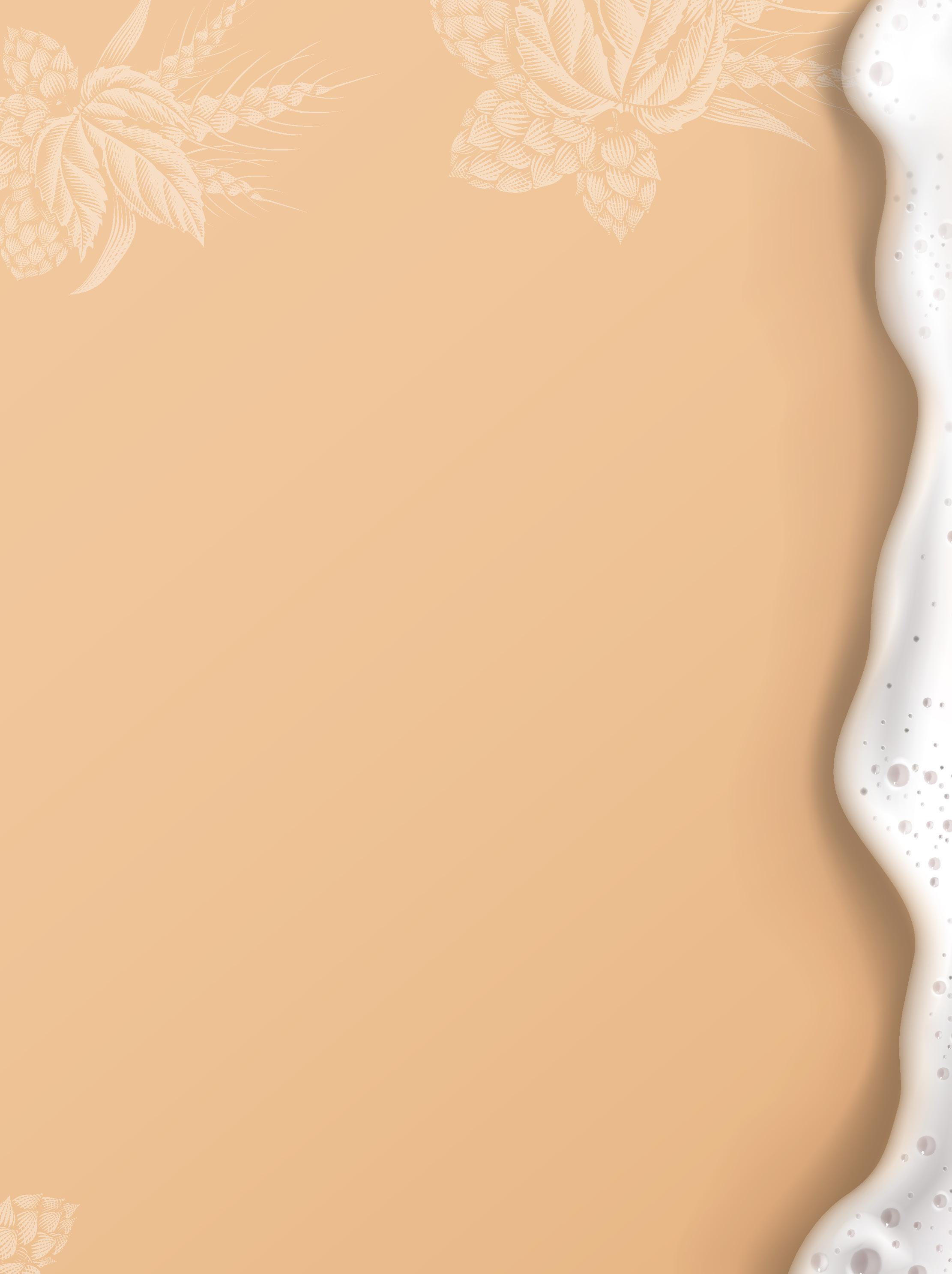
There is a debate amongst Halachic authorities if the laws of Chodosh and Yoshon apply in our days outside of Eretz Yisroel. Any kosher certified beer that is imported to Israel, or produced in Israel, must be certified as Yoshon. There are many kosher consumers, even outside of Eretz Yisroel, who follow the stricter opinion and will only consume Yoshon products, including beer.
Conclusion
Since the beginning of time, beer has been made using very simple ingredients that are inherently kosher. Even the traditional adjuncts used did not pose any kashrus concerns. That is why beer has been consumed for centuries without kosher certification.
However, industries change, and with that the need for kosher supervision has to be adapted accordingly. There is a lot more experimentation with beer, especially prevalent with craft breweries. After all, these micro- and nano-breweries cannot produce the same quantity of product as the larger breweries, so they have to be unique and savvy consumers will notice that no two craft brews taste the same (due to added ingredients and flavors).
Any beers containing the problematic ingredients mentioned in this article
certainly should not be consumed. But most people don’t realize that the kashrus issues don’t stop there; they extend to all beers made at that facility. The non-kosher beers can be produced on the same equipment as other beers and can affect the kosher status of all the other beers sharing that equipment.2
Therefore, beer should be only be consumed if it is kosher certified or, at the very least, only after proper research has been done into the brewery. ~
1 Noda B’Yehuda Mahadura Kamma, Yoreh De’ah 26. See also Tzemach Tzedek Yoreh De’ah 67-68 regarding non-kosher filtering aids for sugar.
www.KosherSpirit.com 13
2 The leniency of Stam Keilim Aino Bnei Yoman is generally not applied in an industrial setting, as, realistically, most equipment is used multiple days in a row. This is unlike a residential sitting where all of the pots and pans are not used continuously. Industrial equipment is a serious financial investment, and any time the machine is idle it is technically losing money.
Kosher Pets
By Dina Fraenkel
If you’re a pet owner, your furry (or scaly) friend is probably an integral part of your family life and you might have some questions about caring for your pet over Pesach. This article will focus primarily on dogs and cats, but all pets are impacted on some level by Halacha.

There are a whole host of Halachos about caring for a pet on Shabbos or Yom Tov, which likely need guidance from one’s personal Rav, since they are complex and have differing opinions. Generally speaking, one feeds their pet as usual (before oneself as prescribed by Halacha), but the pet can only be fed by its owners or caregiver (not friends who are just visiting the house). It is commonly accepted that pets can be held, pet, and played with on Shabbos because it provides enjoyment to the owner.1 Dogs can
1 There are differing opinions on whether a guest or visitor can pet an animal on Shabbos.
also be walked on Shabbos, even without an eruv, with specific conditions about how to hold the leash and waste disposal bags. The leash should be short so that it is taut and cannot dangle less than a tefach off the ground. Waste disposal bags should be tied to the dog’s harness and when the bag is full it should be looped around the harness until you reach your trash can. Treats should not be carried or attached to the leash if there is no eruv, but a small pouch can be attached to the dog’s harness.
What you may not realize, is that (to a degree) a Jewishowned pet needs to keep kosher! It is forbidden for a Jew to benefit in any way from basar b’chalav, and that includes food for pets or working animals. While the food doesn’t require kosher certification2, and does not need to be made with kosher meat, it cannot contain both meat and dairy. This applies to dry food, wet food, treats, and anything the pet eats. It is enough to check through the ingredients and look for common dairy products, like milk, casein, and whey.
Most kosher pet owners are careful not to allow their pet’s food or dishes to come into contact with their kosher
2
Some pet foods do have kosher certification. There is also a law that dog food must be edible for humans since there are some people who are so impoverished that they consume dog food as a source of nutrition.
What you may not realize, is that (to a degree) a Jewish-owned pet needs to keep kosher!
14 www.OK.org
kitchen items and sink. The easiest way to clean your pet’s food and water bowls is by purchasing a separate sponge and washing them exclusively in the bathroom or in a utility sink that is not used for food preparation. In addition, any containers used to store pet treats or food should be different than the ones used for your own food prep.
When Pesach comes around, it gets even more complex! Most pet foods contain grains, as they are necessary for a pet’s health and development. For Pesach, a Jewish pet owner has a few options. The first, and probably easiest, option is to transition your pet to a chometz-free food for Pesach. There are plenty of foods on the market that don’t contain one of the 5 grains and instead have rice as the grain. Kitniyos is not an issue for pets. (Of course, when transitioning a pet to a new food, one needs to do it slowly over a few days so the animal can adjust.)
Another option is to make your own pet food for Pesach. Depending on your pet, this might be easier or harder, and may require a consultation with your veterinarian. Dogs can safely eat a diet of boiled chicken, rice and certain veggies for the duration of Pesach. Cats can safely eat canned tuna or canned salmon for Pesach. Other pets, or those with allergies or health conditions, may not be able to be fed homemade food. It’s always good to do some research before trying this option.
When it comes to your pet’s bowls, food scoops and other keilim, they don’t need to be new for Pesach. They just need to be washed thoroughly beforehand to remove the chometz.
A third option, which may or may not be a good fit for your family, is to board your dog or cat for the duration of Pesach at a boarding facility or

a non-Jewish friend or acquaintance.
Fish are much easier to handle over Pesach due to the prevalence of long-term feeder options designed for vacations. Once the feeder is put in the tank before Pesach, the tank can be covered and sold with your chometz. After Pesach, the tank will likely need a thorough cleaning and then you can return to your usual fish food. Another option is to feed your fish frozen worms, which do not contain chometz.
Lizards that are fed live insects don’t require different food for Pesach as long as the insects are not being kept in a chometz base (like oatmeal).
Being a Jewish pet owner can be highly rewarding and worth the small adjustments needed to conform to Halacha. ~

www.KosherSpirit.com 15
L OOK: eggs
By Rabbi Sholom Ber Hendel, ~ Executive Vaad HaKashrus

Did you know that eggs are one of the most nutrient dense foods on the planet? They also have a lot of value in food manufacturing due to the properties of the two parts, the egg white and yolk, which can be easily separated when needed. Egg whites are used for their foaming property, and egg yolks are used as an emulsifying agent.

HERE ARE SOME OF THE WAYS EGGS CAN BE USED IN FOOD PRODUCTS:
They can be added as an emulsifier to help mix two components that typically separate when they are combined (such as oil and water).
They also help bind mixtures together or as a coating for fried and baked food, either on their own or with bread crumbs/flour.
Eggs can also be used to provide color and form a shiny golden glaze when they are brushed over baked goods.
They cause products to thicken when whipped or heated, and are used as a thickening agent in soups, sauces and custards.
When air is beaten into them, they have a greater ability to foam, mostly because of the egg whites, and can help produce a light texture in cakes, mousses and other types of desserts.
In a typical household setting, eggs are cracked and used as needed, but this is not practical in an industrial setting, so it is very common for manufacturing facilities to use eggs in a liquid form (refrigerated or frozen) or powdered eggs.
HOW ARE EGGS PROCESSED?
After whole, raw eggs arrive at the processing plant, they are placed on a conveyor belt, where they are washed with cleaning agents. The washing process actually removes some of the natural protective barrier of the shell, which is why eggs need to be refrigerated. (Outside of the United States,
these cleaning agents are not usually used, so it is common to see eggs left out at room temperature.)
After washing, the eggs go through a candling process, where a strong light shines through the eggs and a person or machine is able to identify and remove any eggs with defects, such as blood spots. This process is more effective on white eggs than on brown eggs.
If the eggs will not be sold in their shell, the washed eggs are then broken, and the yolks are separated from the whites if needed. The eggs are transferred to a holding tank where additives like salt, sugar or enzymes can be added. Enzymes are sometimes needed as processing agents to improve the properties of the final product, such as for better emulsification or better foaming of egg whites, or they can be used to remove hydrogen peroxide from the eggs. Hydrogen peroxide is a chemical which is sometimes added to eggs if there is a long wait time before pasteurization, or to help reduce the time or temperature needed for pasteurization.
The eggs are pasteurized to kill the bacteria, at a temperature below 150℉, then cooled and sent to a storage tank. From there, they are either shipped in tankers, packed or spray dried.
Dried eggs can potentially turn brown due to the natural sugars in the eggs. This issue can be eliminated by processing the eggs with yeast or an enzyme to remove the sugar from the eggs, and then re-pasteurizing them to remove the microorganism.
ARE ALL EGGS KOSHER?
Only eggs from kosher birds are kosher. However, since eggs from non-kosher birds are uncommon, one is allowed to purchase whole eggs in their shell without further investigation.1 Obviously, eggs that look unusual should not be consumed without proof that they come from kosher birds. Eggs from treifa (mortally wounded) chickens are not kosher, but one may purchase eggs without a concern that they
16 www.OK.org
A CLOSER
1 Shulchan Oruch, Yoreh Deah 86:2.
are not treifos.
It states in Shulchan Oruch2 that one may not purchase cracked eggs from a gentile, but, where Pas Palter is allowed, even bread containing eggs is allowed. The reason for this is that eggs are typically sold whole, so if they are being sold cracked, there is reason to suspect that they came from a questionable source. Now it is common to sell liquid eggs, and the manufacturing plants process only eggs, so there is no reason to suspect the source of the liquid eggs sold by a non-Jew (but they still need kosher supervision).
BLOOD SPOTS
Blood spots in fertilized eggs may be the beginning of the formation of a chick and the entire egg is prohibited. Commercial eggs are not fertilized (there are no roosters at the chicken farms) and those blood spots are only an issue of maaras ayin since they look like prohibited blood. The blood spots can be thrown out and the rest of the egg can be consumed. The minhag today is still to discard the entire egg.3 When buying eggs from smaller companies or farms, it is important to check the label to see if they’re fertilized.
In industrial settings, the eggs go through the abovementioned candling process, and there is no practical way for a mashgiach to check the eggs individually since they process hundreds or thousands of eggs per hour. This is permitted because the requirement is to check eggs only when practical - the Shulchan Oruch ruled that (fertilized) eggs do not need to be checked at night4 (in the days before electric lighting). In a home setting, the minhag is to check the eggs even at night.
EGGS LEFT OVERNIGHT
The Gemara5 says that a person who eats eggs, onions, or garlic that were left overnight after peeling endangers
his life because they have ruach ra’ah. This Halacha is not brought down in the Shulchan Oruch and there is discussion between the Poskim if it is still relevant in our days. According to most Poskim this Halacha is still relevant.6 This Halacha does not apply when the egg, onion, or garlic is mixed with other ingredients.
~ Kosher follows the psak of Rav Moshe Feinstein7 that the warning in the Gemara is limited to home or Food Service settings where the eggs are peeled with the intention to use them within the next day or two, which is similar to the usage at the time of the Gemara, but does not include industrial egg manufacturing where the eggs are cracked with the intention for usage days or weeks later (since this did not exist at the time of the Gemara).
INGREDIENTS AND PROCESSING AIDS
The enzymes used in egg production can be animal based or grown through fermentation. The enzymes can only be considered kosher if they were grown through kosher fermentation. Obviously, every other ingredient or additive in the processed eggs needs to be kosher in order for the eggs to be kosher.

EQUIPMENT
Some egg mixes include dairy ingredients. This is common in the United States due to the USDA Dried Egg Mix, which is a nutritional product provided by the government that contains dairy. Facilities that produce dairy products need to be properly kosherized before they can produce pareve egg products. ~
www.KosherSpirit.com 17
2 Yoreh Deah 86:10, see Pri Megadim, SD 31.
3 Igros Moshe, Yoreh Deah 1:36.
4 Shulchan Oruch, Yoreh Deah 66:8. 5 Niddah, 17A.
6 וז הכלה איבהש ז ףיעס שפנו ףוג תרימש ’לה ברה ע”ושב האר 7
Igrot Moshe Yoreh Deah 3, 20.
Method Madness
By Duby Litvin
Pesach has lots of moving parts, many areas to tackle, each as important as the last, and it’s easy to freeze up and hide from your endless to do lists.
This year is the perfect opportunity to re-create a system for Pesach planning. A system that allows us to enjoy preparing for the holiday, while still getting everything done.
Everyone works differently and, therefore, no two people’s systems will look the same. Some of us love freezing as much food as possible. Meat, chicken, soup, whatever can be frozen. Others dislike the idea of “frozen food” and will only cook fresh right before. If your system works for you, and it is less stressful for you and your family, then go for it!
Several years ago, I developed a system to manage my holiday madness. Here is my 10 step plan for preparing for Pesach, breaking Project Passover into small, manageable chunks. Baruch Hashem, I have been able to finally enjoy Pesach prep, and the Seder, too!
The
Step 1:
Duby Method for Pesach Planning:
Tackling the Cleaning:
The great thing about cleaning for Pesach is that it can be done at any time. Aside from the big food areas (kitchen, dining areas), Pesach cleaning can begin as early as you wish. Over the years, “Pesach cleaning” has turned into spring cleaning for many people. After discussing with many Rabbis, what is essential for Pesach cleaning looks nothing like a “spring cleaned” home. It helps to keep this in mind.
Tackle the “far away from food” rooms first, what I call “Cool Zones”, and enact a “no food in the bedroom rule” as soon as possible. Work your way closer to the food areas known as the “Hot Zone” and leave the kitchen area for last.
Use a Countdown Calendar to mark cleaning deadlines for yourself, to keep with the theme of breaking things down into small parts.
$$$
Step 2: Create the Holiday Budget:
Sit down with your significant other and figure out what Pesach will look like this year. Lavish meals? Table full of guests? Or will it be more intimate, with just the family? There’s no wrong answer, but before you start the real holiday prep, it is best to have managed expectations and open communication, to keep everyone working together on the same page.
Step 3:
Create Your Guest List:
Before any menu or shopping list, we need to have a general idea of the amount of people per meal, and if you are planning a fancier meal or simpler food or going out for a meal or two. Plus, the earlier you invite your guests, the sooner you can confirm your meals, and prepare any accommodations for them.
18 www.OK.org
TO THE C R EATING A
Step 4:
Menu Time!
Now that we know who’s coming, we can plan out a rough menu for each meal which will allow you to calculate just how many pallets of potatoes and crates of eggs you need.
Step 5: Step 6:
Create the Shopping List:
Having a detailed shopping list will save time and money, as you list is based on your menu, and not your wandering eye at the Pesach aisle. Bonus points if you kept your shopping list from last year so you can compare quantities.
Make a List of the Foods to Prepare in Advance:
There are many foods that can be prepped and frozen. Many desserts such as cakes, brownies, sponge cakes can all be frozen with no difficulty. Gefilte fish, certain kugels, soups can all be frozen, and even some main courses too.
Step 7:
Hit the Stores:
In addition to dividing your shopping list by stores, also divide it by shopping trips. Your first trip will be items you need in advance to start prep work. Foods you plan to cook and freeze. Continue using your Countdown Calendar for shopping and errand trips. This will help eliminate running to the store for that one thing you forgot, usually on erev Yom Tov.
Cook & Freeze
Cook the Foods on Your “Make In Advance Chart” Fill your freezer, label, and inventory you prepared foods.
Schedule
Your Time:
Use your countdown calendar to schedule the cleaning, cooking, and try to include expected durations on your list, so you see if you are squeezing too much into one day. Be sure to include self-care too – don’t forget to eat and drink while working in the kitchen all day and take time for yourself as well.
Step 8: Step 9: Step 10:
Last Minute Checklists
Bedikas Chametz and Erev Pesach are very hectic, with last minute things one might forget. Keep a list of what needs to be done, from locking up cabinets, emptying garbage, and any small details one might forget and might get lost in the shuffle.
I wish you luck with your Pesach Prep! Remember, you got this, and to take it slow, one step at a time. Keep in mind that Yom tov is meant to be a celebration of freedom and joy and the cooking doesn’t have to be done for the whole week in advance. My best wishes for a Kosher and Freilichen Pesach, with your loved ones. ~
www.KosherSpirit.com 19

Mousse
20 www.OK.org
Chocolate
with cookie crumble
This mousse was always my grandmother’s masterpiece. We all looked forward to Yom Tov meals at Grandma’s house because we knew that in addition to all her incredible food, we would be enjoying her chocolate mousse! As I learned to adjust my Yom Tov cooking, I knew that her chocolate mousse still had to be on our menu.
The cookie crumble is so outstanding that we bring a bowl of it to the table so we can keep on adding more. When serving a crowd, I make it in a springform pan; otherwise, I make it in individual ramekins so they can be pulled out of the freezer as needed. Sometimes (okay, more than sometimes) we find ourselves having one on a random weekday.
PAREVE | KP
In a small saucepan or double boiler, combine chocolate chips and oil, cooking over low heat and stirring until smooth. Allow to cool.
In a stand mixer, beat egg whites until stiff. In a second bowl, whisk egg yolks with coconut sugar; add to cooled melted chocolate and stir. Using a spatula, gently fold chocolate mixture into the beaten egg whites until a mousse forms.
Add one-quarter of the mousse mixture to prepared springform pan; bake for 15 minutes. To bake in ramekins, put a spoonful of mousse into each; bake for 8 minutes. Alternatively, divide mousse among ramekins and freeze without baking. Remove from oven. (The baked mousse may rise while baking and then fall when cooling.) Top with remaining mousse mixture, dividing between ramekins, if using. Cover; freeze until solid. Remove from freezer 20 minutes before serving.
YIELDS
1 (8 OR 9 INCH) SPRINGFORM PAN OR 10 RAMEKINS
MOUSSE
7 oz (200 grams) 50-80% dark chocolate chips or baker’s chocolate
½ cup unrefined extra virgin coconut oil
7 eggs, separated
½ cup coconut sugar or white sugar
Reduce sugar to ¼ cup for lower-sugar option.
Silan, for serving
CHOCOLATE CHIP
COOKIE CRUMBLE PAREVE
YIELDS 2 ½ CUPS
2 cups Rorie’s Grain Free Flour or 2 ½ cups almond flour
4 tbsp coconut oil
2 tbsp honey
1/2 cup 50-80% chocolate chips
COCONUT WHIPPED CREAM
1 (14-oz) can coconut milk
1 tbsp honey
DIRECTIONS
Prepare the chocolate mousse: Preheat oven to 350°F. Grease a round 8-inch (20-cm) springform pan or 10 ramekins with coconut oil.
Prepare the chocolate chip cookie crunch: Preheat oven to 350°F. Line a baking sheet with parchment paper. Using a spoon, mix flour, honey, and oil in a small bowl, then mix with your hands until crumbly. (Keep the pieces bigger to get a chunkier crumble.) Spread crumble on prepared baking sheet. Bake for about 10 minutes. Remove from oven.
While crumble is still hot, add chocolate chips, stirring to coat. Store in an airtight container at room temperature. Prepare the coconut whipped cream: Refrigerate the can of coconut milk overnight. Chill a glass or metal bowl and the mixer beaters in the freezer for at least 30 minutes or overnight. (This step is optional but will help create a fluffier cream.) Remove coconut milk from the fridge; scoop off the cream that has risen to the top. (The leftover coconut water is delicious used in shakes.) Place cream into chilled bowl; beat with cold beaters on high speed until stiff peaks form, 2–3 minutes. While continuing to beat, drizzle in the honey. Transfer whipped cream to a container with a lid; refrigerate until ready to serve.
To serve, drizzle silan on a plate; top with a slice of mousse. Add coconut cream, sprinkle with crumbs, and enjoy!
NOTES
Cookie crumble can be doubled and stored in the freezer.
Coconut cream will stay fluffy in the fridge for 2 days; do not freeze.
All ingredients need to bear a reliable Kosher for Passover certification. ~

www.KosherSpirit.com 21 Reprinted with permission from Food You Love: That Loves You Back, written by Rorie Weisberg, published by ArtScroll/ Mesorah Publications. Pick up your copy + FREE Pesach Planner today at ArtScroll.com or your local Hebrew Bookseller
Pesach: A Belted Waist, Shod Feet and Staff in Hand
Based on the teachings of the Lubavitcher Rebbe, Rabbi Menachem M. Schneerson
Among the laws unique to the first Korbon Pesach was the obligation that it be eaten “with your waist belted, your shoes on your feet and your staff in your hand.”1 This indicated the Jewish people’s readiness to leave Egypt and their belief in their impending freedom.2
Every detail in Torah serves as a lesson in a Jew’s life.3 This is especially so with regard to something as encompassing as remembering the Exodus, an “important fundament and a mighty pillar of our Torah and our Faith.”4
What lesson are we to derive in our own spiritual exodus from the above-mentioned law?

Among the most important elements in a person’s life are his achievements, particularly his spiritual and moral accomplishments.5 One should strive to attain these achievements in the most complete manner possible.
It goes without saying that in order to embark on this path, a person must first free himself from all his negative characteristics and tendencies — elements that hinder, or at least sharply limit, one’s ability to strive toward a life of spiritual and moral accomplishment.
There are three specific areas in which people strive for accomplishment, achievement and completion: with regard to oneself, with regard to one’s immediate environs, and finally, with regard to the greater world.6 The way to achieve success in all these areas is alluded to in the verse quoted above.
Spiritual and moral attainment with regard to a person himself encompasses one’s entire mode of conduct, both with regard to refraining from evil and to doing positive deeds, performing Torah and mitzvos to the best of his ability.
The verse alludes to this by stating “with your waist belted.” We readily observe that the mid-section keeps the entire body upright.7 In other words, the verse is telling us that we should always behave in a proper and upright manner.
The second area in the struggle for achievement and completion pertains to one’s relationship with his fellow man and immediate environs. The individual seeks to help all those with whom he comes in contact, seeking to enhance their lives, as well as generally striving to imbue his surroundings with holiness.8
This is alluded to by the words “your shoes on your feet.” It is specifically the feet that come in contact with the ground, which is rife with objects that may harm the one who treads upon them. Rugged protective garments are a must if someone is to walk in a place that may be fraught with danger.9
So too when a person leaves his own spiritually comfortable setting, his own spiritual “space,” and tries to influence his surroundings — surroundings that may seek to rend, tear and gouge his spirituality. In order to be sure that he effectively influences others and is not himself influenced to the contrary, he needs an extra spiritual protective layer10 — “your shoes on your feet.”
The third area in a person’s life pertains to that part of the world that seems so distant from him, either physically or spiritually, that he has no idea how to reach out to it. Nevertheless, “Each and every individual is obliged to say: ‘The entire world was created for my sake,’”11 i.e., one’s responsibility extends far beyond one’s immediate confines.
The way in which one extends his grasp and reaches out to the world as a whole is through the “staff in your hand.” This staff will be either the “staff of kindness” or the “staff of sternness,”12 whatever is most appropriate and effective. In all events, the staff is a symbol of dominion, whereby an individual extends his might and influence.
Although this task is daunting, the festival of Pesach, with its concomitant spiritual empowerment, enables us to succeed. We then merit that “I will satiate him with long days, and show him My deliverance,”13 with the speedy arrival of our righteous Moshiach.14 ~
Based on Hagaddah Shel Pesach im Likkutei Taamim, Minhagim U’Biurim, Vol. II, pp. 775-784.
The content in this page is produced by Chabad.org, and is copyrighted by the author and/or Chabad.org. If you enjoyed this article, we encourage you to distribute it further, provided that you do not revise any part of it, and you include this note, credit the author, and link to www.chabad.org. If you wish to republish this article in a periodical, book, or website, please email permissions@chabad.org.
22 www.OK.org
1. Shmos 12:11.
2. Commentators, ibid.
3. See Radak, Tehillim 19:8; Gur Aryeh, beginning of Bereishis ; Zohar, Vol. III, p. 53b; HaYom Yom, p. 52.
4. Chinuch , Mitzvah 21.
5. See Tanya ch. 29 (36a), beginning of ch. 32; Commentary of Radvaz on Rambam, Hilchos Mamrim 2:4.
6. See Shabbos 54b.
7. See Igeres HaKodesh, Epistle I, Or HaTorah p. 306ff.; Hemshech VeKachah 5637 , ch. 4.
8. See Tanya, ch. 36.
9. See Hemshech VeKachah, ibid., ch. 113; Taanis 23b.
10. See Toras Chayim, Beshallach, p. 221b ff.; Or HaTorah, Shir HaShirim, Vol. III, p. 987ff.
11. Sanhedrin 37a; Rambam, Hilchos Sanhedrin 3:12.
12. See Zechariah 11:7. See also Sanhedrin 24a; Hemshech VeKachah, ibid., ch. 116ff.
13. Tehillim 91:16.
14. See commentaries on this verse.
CHASSIDIC INSIGHTS
In the Haggadah we read a debate how many plagues the Egyptians suffered in Egypt and how many were suffered at the splitting of the Yam Suf.
Rabbi Yossi HaGalili says there were 10 plagues in Egypt and 50 plagues at the splitting of the Yam Suf.
Rabbi Eliezer says there were 40 plagues in Egypt and 200 at the splitting of the Yam Suf.
Rabbi Akiva says there were 50 plagues in Egypt and 250 at the Yam Suf.
Why is it so important to know exactly how many different plagues the Mitzriyim received?
The answer is because the redemption of Egypt was like a preview of the Final Redemption. The plagues the Egyptians received will dictate how many different punishments will befall those who have hurt us over this long Golus at the time of the Final Redemption.
By Rabbi Chaim Fogelman, ~ Executive Kashrus Vaad
The first time Moshe Rabbeinu’s parents are mentioned by name is in Parshas Va’eira, in connection with Shevet Levi. Why weren’t their names mentioned in Parshes Shemos as the parents of Moshe Rabbeinu?
The Maharal answers that this was to teach us that Moshe’s prominence was not given to him because of his parents; rather, it was his own merits that made him worthy of being the leader of B’nei Yisroel.
When we refer to Yitzchok Avinu, Yitzchok is usually spelled with the letter tzaddik (קחצי), but sometimes, like in the prayers recited at a Bris Milah, it is spelled and pronounced with the letter sin(קחשי) .
Why the change?
Hashem told Avraham that his children would be slaves in Egypt for 400 years. In actuality, they were only slaves for 210 years, and the reason is because Hashem began to count the 400 years from Yitzchok. The difference between 400 and 210 is 190 (the numerical value of ץק). The difference between the letter tzaddik (90) and shin (300) is also 190, hinting to us that it was because of Yitzchok that the redemption came 190 years early. ~
www.KosherSpirit.com 23
SOUL NUTRITION
Is it Kosher for Pesach?
”Kosher Investigator beautifully captures Rabbi Berel Levy’s remarkable contributions to kosher food – and, more generally, to Judaism. A skilled investigator himself, author Dovid Zakilowski draws on oral interviews, obscure printed sources, and Rabbi Levy’s previously unknown personal papers to provide a revelatory account of his life. Written with great sympathy – and not shying away from controversial topics – this carefully researched book is a page-turner that readers will thoroughly enjoy.”
—Dr. Roger Horowitz author of Kosher USA: How Coke became kosher and other tales of modern food.
”Kosher Investigator pays honor to a founding father of modern industrial kosher certification. Rabbi Berel Levy’s passionate commitment to yiddishkeit and his keen powers of investigation helped transform the American kosher certification system into a model of reliable private regulation. Dovid Zaklikowski’s inspiring account also reveals the love of Torah and Am Yisroel that motivated Rabbi Levy’s many achievements.“
Search“OK Kosher” ontheAppStore& GooglePlaytofind our apps

—Professor Timothy D. Lytton author of Kosher: Private Regulation in the Age of Industrial Food

KOSHER CERTIFICATION ~ Kosher Spirit, 391 Troy Avenue • Brooklyn, NY 11213 718-756-7500 • info@ok.org • www.ok.org Coming Soon November 2017! KOSHER CERTIFICATION ~ Kosher Spirit, 391 Troy Avenue • Brooklyn, NY 11213 718-756-7500 • info@ok.org • www.ok.org
Download the Kosher Food Guide app and get the most updated list of the Kosher for Passover Products that ~ certifies.



 Editor in Chief, ~ Executive Kashrus Vaad
Editor in Chief, ~ Executive Kashrus Vaad






 By Rabbi Don Yoel Levy OB"M
By Rabbi Don Yoel Levy OB"M
 RABBI DON YOEL LEVY ל"ז ע"שת ןסינ 'בכ ,חספ לש ןורחא
RABBI DON YOEL LEVY ל"ז ע"שת ןסינ 'בכ ,חספ לש ןורחא


















